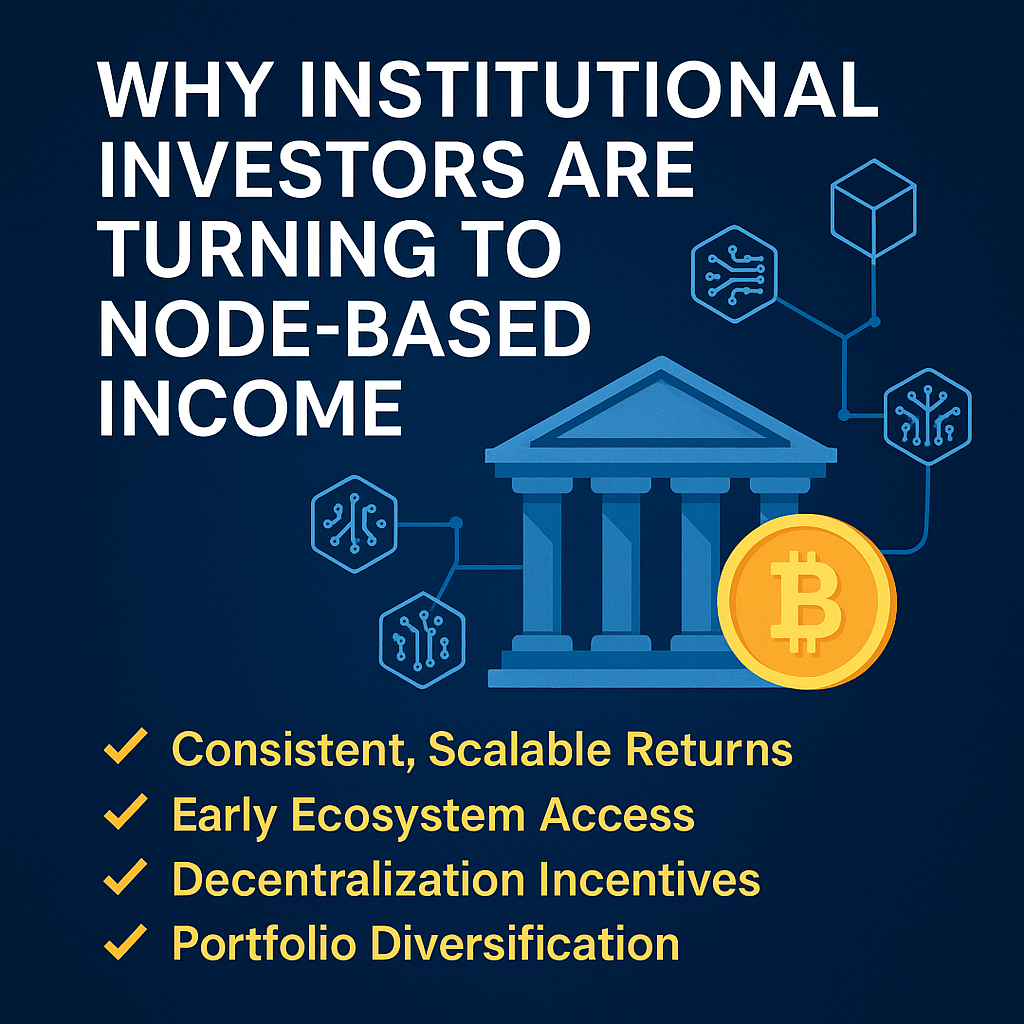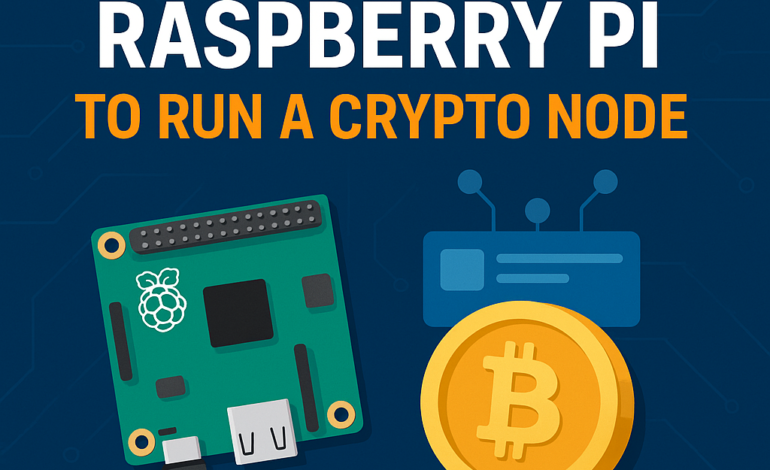The world of cryptocurrency has evolved far beyond simple buying and holding. As blockchain ecosystems mature, new opportunities for consistent, scalable income streams have emerged — and one of the most compelling is node-based income. What was once the territory of crypto enthusiasts and early adopters is now attracting serious attention from institutional investors, hedge funds, and crypto-native investment firms.

What Is Node-Based Income?
A node is essentially a computer that participates in a blockchain network by validating transactions, maintaining the ledger, or providing specific services like oracles, decentralized storage, or computation. In return for these contributions, node operators earn rewards in the form of native tokens, fees, or governance incentives.
Unlike staking, which often involves delegating assets to a third-party validator, running a node gives the investor direct control over the infrastructure, operations, and returns.
Why Institutions Are Getting Involved?
Consistent, Scalable Returns
Institutional investors seek predictable, risk-managed returns, and node-based projects — especially those with long-term utility — offer steady income streams. Networks like Chainlink, Flux, and Ethereum validator nodes provide well-structured, transparent reward models that can be scaled by operating multiple nodes.
Early Access to Growing Ecosystems
By participating as node operators, institutions gain early exposure to promising blockchain networks before they reach mainstream adoption. This first-mover advantage allows them to accumulate rewards at higher rates and build strategic influence within the protocol’s governance structure.
Decentralization Incentives
Decentralized networks rely on node operators for security and functionality. Many protocols actively incentivize institutional-grade node operations with bonuses, fee reductions, and priority access to future opportunities, making it an attractive ecosystem to be part of.
Portfolio Diversification
As crypto markets mature, institutional investors are diversifying beyond traditional assets like Bitcoin and Ethereum. Node-based income offers non-correlated cash flow opportunities, reducing overall portfolio volatility and providing returns that aren’t solely dependent on token price appreciation.
Regulatory Adaptability
Unlike high-risk DeFi yield farming, node operations typically involve providing essential blockchain infrastructure services, making them more defensible under regulatory scrutiny. In 2025, as regulators tighten crypto compliance rules globally, infrastructure-based income strategies are emerging as a safer, institutionally accepted alternative.
Examples of Institutional Node Strategies
- Chainlink Oracles: Providing decentralized price feeds for DeFi protocols with consistent LINK token rewards
- Flux Nodes: Supporting decentralized cloud infrastructure while earning scalable income
- Ethereum Validator Nodes: Contributing to network security in Proof-of-Stake with reliable ETH rewards
- Aleph Zero & Ankr Nodes: Early-stage opportunities offering high ROI for infrastructure support
Key Considerations for Institutions
While node-based income is promising, institutions must weigh several factors:
- Initial infrastructure investment
- Ongoing operational costs and uptime requirements
- Technical expertise or partnerships for node management
- Tokenomics and reward sustainability
- Jurisdictional regulatory compliance
Final Thoughts
The growing interest from institutional investors in node-based income marks an important shift in how the crypto economy is maturing. It’s no longer just about speculative trading; it’s about building and securing the infrastructure that powers the future of decentralized systems.
As blockchain adoption accelerates in 2025, expect to see more funds, fintech firms, and crypto-native VCs deploying capital into node operations as a scalable, secure, and strategic passive income source.
Stop Selling Promises — It’s Time To Show More Proof
Running a Node vs. Crypto Staking: Which Is More Profitable?




